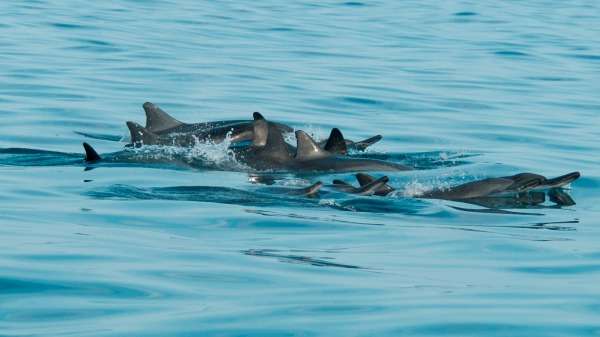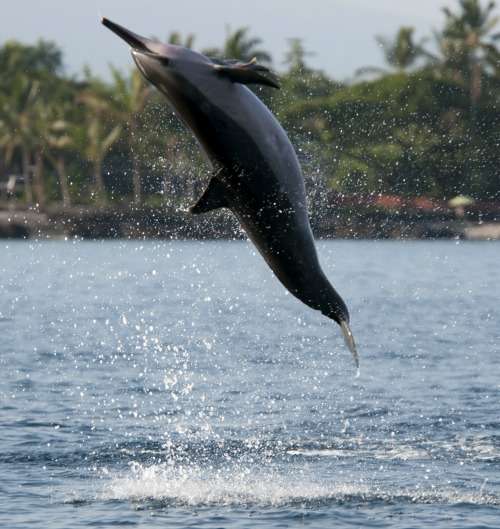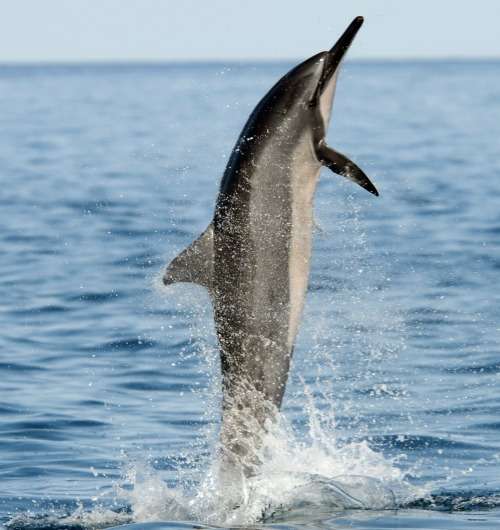Scheduled bay closures proposed to protect Hawaiian spinner dolphins

Hawaiian spinner dolphins (Stenella longirostris) driven out of sheltered bays by human activity at the popular tourist destination are unlikely to rest elsewhere, according to recent research.
A study involving the Murdoch University Cetacean Research Unit (MUCRU) has used land- and boat-based observations to compare the behaviour of spinner dolphins—famous for its acrobatic displays such as spinning through the air—inside and outside of four sheltered bays along Hawaii's Kona Coast.
Lead project researcher on the project Murdoch University PhD candidate Julian Tyne says Hawiian spinner dolphins have evolved a very rigid diurnal behavioural pattern where they forage offshore at night and return to sheltered bays during the day.
"The problem is that in these bays, where they are trying to socialise and rest during the day, people use this space for recreational purposes," Mr Tyne says.
The four bays studied—Kauhako, Honaunau, Kealakekua and Makako Bay—on the Island of Hawaii, are popular tourist destinations.
Mr Tyne says locals and tourists alike target these dolphins for up-close interactions.
"There are concerns for the effect these interactions are having on the dolphins," Mr Tyne says.
The research, which quantified the time spinner dolphins spent engaged in particular activities, found that spinner dolphins are unlikely to rest outside of sheltered bays.

"The fact that they were unlikely to rest outside those bays may indicate that there is no alternative for them to go to rest," Mr Tyne says.
"If they were to be displaced from their preferred resting habitat at the moment, then it is unlikely that they will rest elsewhere."
Mr Tyne says these rest periods are an important part of the dolphin's energy budget and may be influential in maintaining alertness for successful foraging and predator avoidance.
The study also identified that having sandy substrates are important for the dolphins resting behaviour.

"The hypothesis is that they prefer to rest over sandy bottoms because they can see predators better," Mr Tyne says.
Based on the critical habitats identified in the study, the authors recommended time-area closures to manage human interactions with spinner dolphins in their preferred resting bays.
"In the paper, the recommendations we have come up with are either to close the bays off completely to people while the dolphins are resting," Mr Tyne says.
However, Mr Tyne says while the biological data points clearly to the need for such strategies, management cannot be viewed from biological or conservation perspectives alone.
Provided by Science Network WA



















